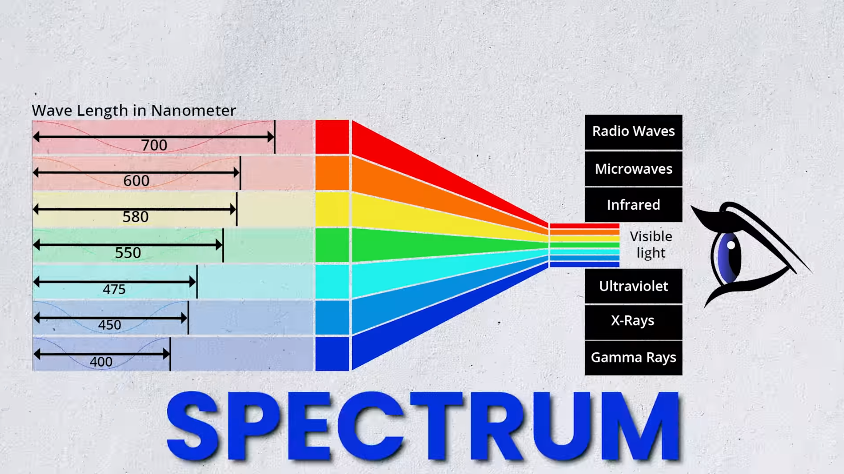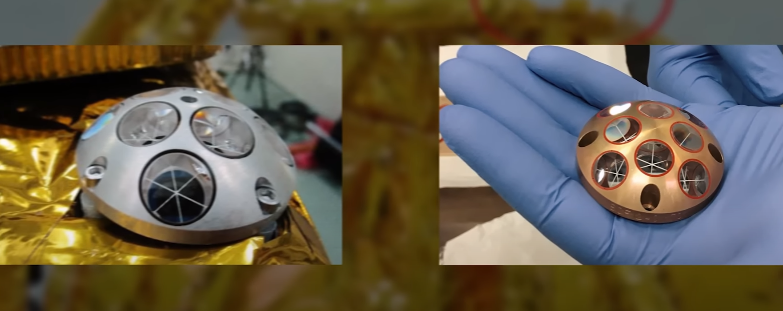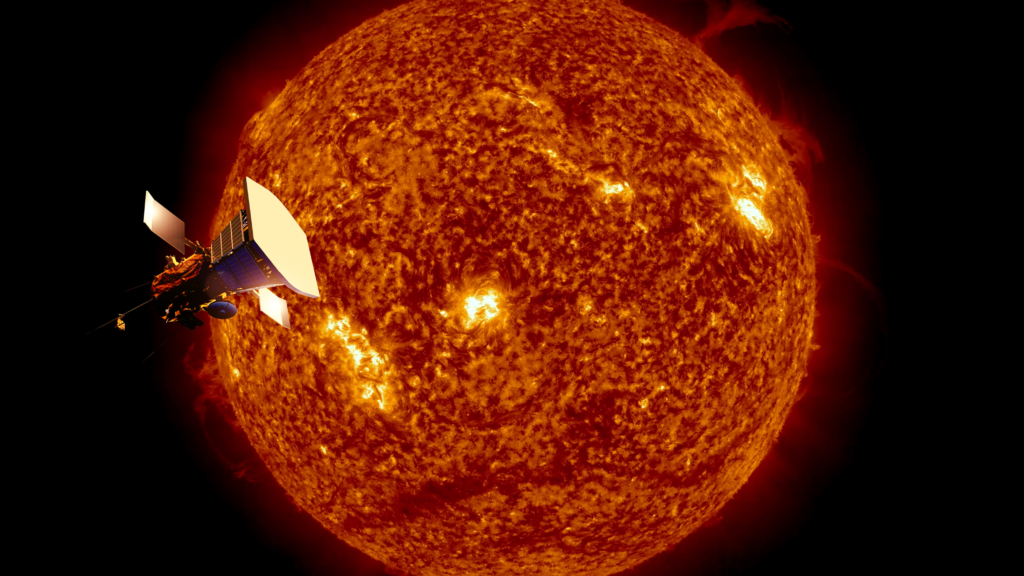Many people were impatient to see the video and pictures of Pragyan rover coming out of Vikram lander after Chandrayaan 3’s landing. It gave the moon soil and particles time to settle back on the surface so that the lunar surface soil does not stick to the rover’s cameras. The entire process took about four hours. According to India time on August 23 at 10 o’clock in the night, the moment came when the rover came out of the lander and after that it also made the first Discovery.
First Main Discovery Performed By Chandrayaan 3
A propulsion module of Chandrayaan 3 is also making a big discovery, it is studying the Earth by orbiting the Moon at 100 degrees. The name of this propulsion module is shape which means Spectro-Polanrimetry of Habitable Planet Earth whose function is to measure the spectrogram coming from Earth. The purpose of this research is simple, with its help we can identify a unique spectrum so that by matching this unique pattern with the spectrum from the thousands of habitable planets in the universe that we have found, we can know the possibility of this. We can determine whether life is possible there or not.
But how can the light spectrum from a planet tell us about the related details of life from that planet?

As light is a mixture of its wavelengths. What we call spectrum.

We can see a small visible light part in this spectrum with our eyes. It is invisible to our eyes. But advance instruments can catch them quite easily. From where this light spectrum is coming, we can find out more details about the source. Each object in the universe has a property during which light falls on this metal, then some part of this element is observed by the light source and the rest of the spectrum is emitted back by that element. This spectrum travels for millions and thousands of light years in our universe.
In which the details of this element and that origin missing spectrum are stored. Chandrayaan 3 also captures the spectrum from Habitable and looks for unique patterns in light from our Earth. Then through this they can claim that there is life in those exoplanets or not.
Second Discovery Planned by Chandrayaan 3
The most important discovery is to be made by Vikram Lander. It has four payload modules which are discussed one by one.
RAMBHA LP Payload
This system will measure related data of the plasma atmosphere from the moon. The Moon also has an atmosphere which is not made of gases like our Earth but of plasma.

Now the plasma is filled with ionised gases, charged atoms, electrons and highly charged radioactive particles. Other parameters like atmosphere plasma density composition will be calculated by Chandrayaan 3‘s Rambha LP Payload.
ChaSTE
ChaSTE stands for Chandra’s Surface Thermo-Physical Experiment whose mission is Measuring Thermal Conductivity and Temperature on the Moon. In simple words you can call it the moon thermometer. A hole will be made up to 10 meters in the surface of the moon, then this thermometer will be inserted into the hole with a heat, with which this thermometer will measure the surface of the moon and what effect the heat has on the soil of the surface of the moon. This payload has also started working on the moon and it is being continuously informed to ISRO.

Here’s the data we’re graphing right now. This graph is based on 2 measurements. On the Y axis we are shown in Depth (mm). And on X axis we are shown in Temperature (C). focus a little,
- This is the 20 mm depth on the Y axis when the ChaSTE payload was attached to the Vikram lander. Where we are seeing its temperature of 60 degrees.
- Next, looking at the 0 mm measurement on the Y axis, this is the point where ChaSTE touches the surface of the moon through the drilling hardware, where the temperature is 50 degrees.
- Now science magic is going to happen at this point when Vikram lander takes CHaSTE to 80 mm inside the moon’s surface by means of a drill, at that time there is a dramatic drop in temperature inside the moon’s surface. This drop is not so small but so much. More so, the temperature drops to -10 degrees. It’s only up to 8 cm went in and you can see how much the temperature dropped in the chart.
Sticking just one finger in from the surface of the moon will expose your finger to temperatures ranging from 50 degrees to -10 degrees. Now here we are going to have an advantage of the sudden temperature drop that there is 100% water on the moon, now we just have to find it. As we know, water remains in the form of ice when it is below 0 degree temperature and at 50 degree temperature, the same water evaporates as steam.
Now, the temperature of the surface of the moon remains between 50 degrees and 100 degrees. Therefore, it is impossible to have water on its surface, but the water inside the surface can be in the form of ice. This is the biggest discovery of Chandrayaan 3. If Chandrayaan 3 now finds out where the water is, the fate of this mission will change.
ILSA
Chandrayaan 3‘s third payload, ILSA, which stands for Instrument for Luna Seismic Activity, as the name suggests, will be used to measure seismicity on the Moon. That’s right, but why? Because the moon has no tectonic plates, how will seismic activity be measured there? Now listen to his answer.
The moon does not have tectonic plates, but earthquakes still occur there. The main reason for this is that the moon is tidily locked in the earth’s orbit. When the moon moves into the earth’s orbit, the moon starts shaking in its orbit due to the gravitational force of the earth. The vibration generated by it is to be measured with the help of ILSA. Because with the help of this vibration we can learn a lot about the internal structure of the moon. Which is no less than a mystery for us humans even today.
LRA
Chandrayaan 3’s fourth Payload which is the last Payload which means Laser Retroreflector Array, Well this instrument is not of ISRO but it is of NASA. Which is mounted on top of Vikram Lander.

This is the instrument you see in the image above. In which small reflective mirrors are installed. A question arises here. What is the function of this mirror on this moon?
Let me tell you it will be used as a very important task and that is to measure the perfect distance between the moon and the earth. As it is known, when the astronauts stepped on the moon during the Apollo mission, they placed a mirror there through which every light from the moon hit the earth and it was determined how long it took for this light to be reflected from the moon. Arrived
Our new moon mission has been advanced enough so now we are building advanced instruments so that all the missions can be performed well. Therefore, NASA has sent an advance mirror to the moon to measure the perfect distance between the moon and the earth using a laser.
Praghyan Rover
Now coming to the payload on the rover. It has 2 payloads one APXS and LIBS.
APXS
APXS Payload stands for Alpha Particles X-Ray Spectrometer whose task is to find out the composition of moon soil, which minerals and elements are present in it.

What you see in this picture is the APXS that is mounted like a red light in front of the rover. In the middle is a sensor surrounded by small round boxes containing the rather dangerous Curium 244. Curium 244 emits Alpha Particles X-Ray within itself. When the scientists turn on this instrument, the instrument will be pointed at the moon soil, and particles will come out of it that will directly impact the moon’s surface.
And the light of this spectrum will be absorbed by the moon soil and some will be reflected. Which will be detected by the sensor placed in the middle of it. As it was just mentioned that there are many hidden details in the elements and source in the spectrograph, so the same technique has been used here as well. From which we will identify moon soil elements.
LIBS
LIBS This is our last and final payload, its full name is Laser Induced Breakdown Spectroscope, well you guessed it, it will also use lasers to discover elements in moon soil with the help of spectrum. The results of which will be enough to activate. Its working is quite complex. But don’t worry, I will explain to you in simple words.

This is what the LIBS lasers do here. It will hit the moon soil with a high charge laser so that the electrons of the atoms in the soil are excited and go into a high energy state to create plasma and then later they will release the energy spectrum. So, the element in the soil will be identified by detecting the spectrum from the sensor in the rover.

